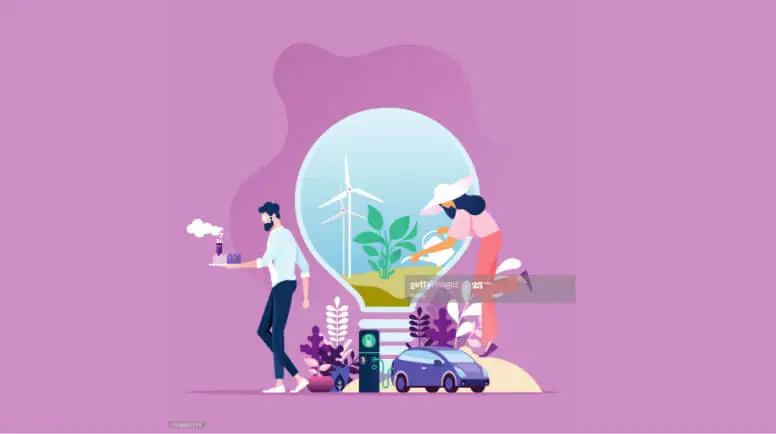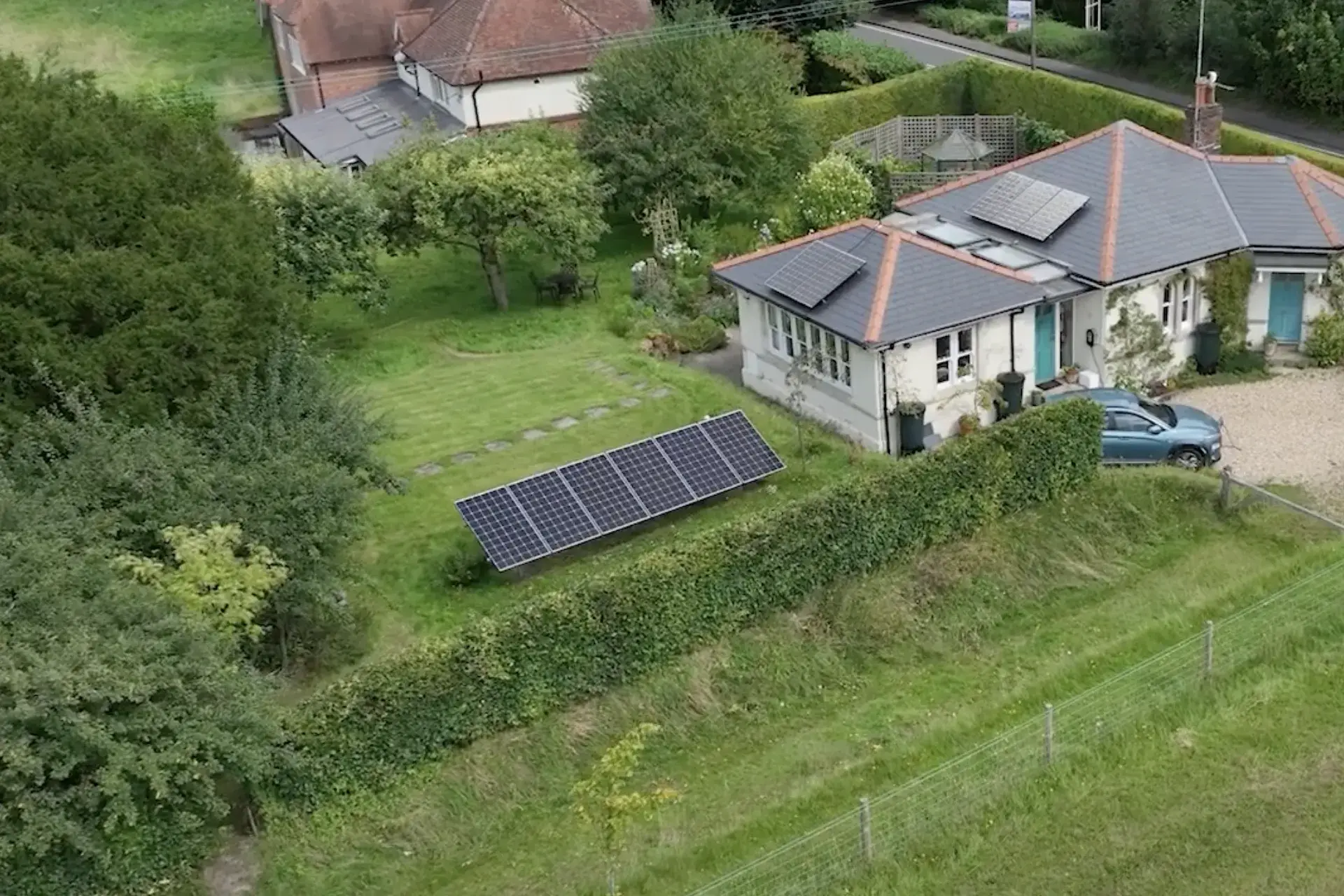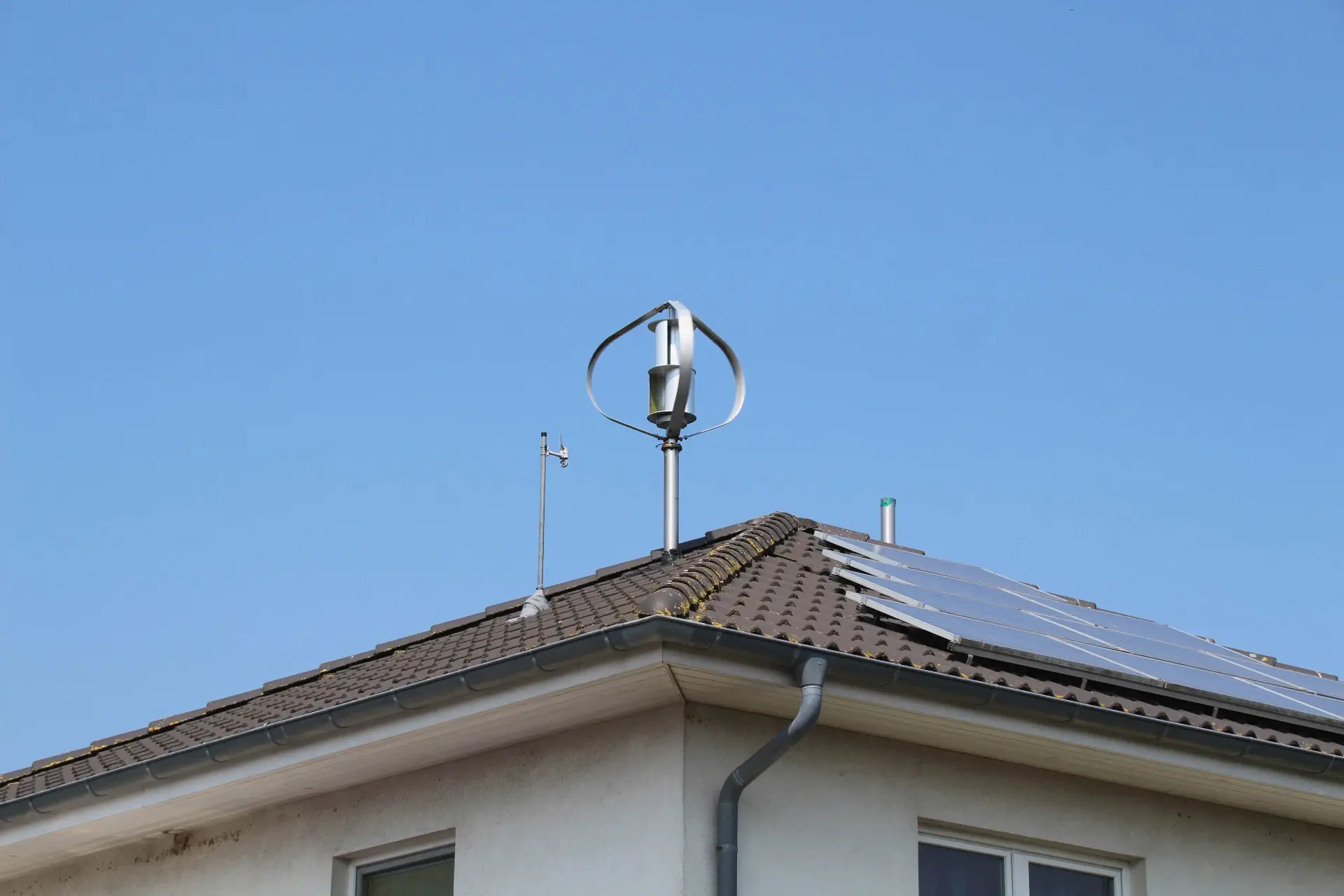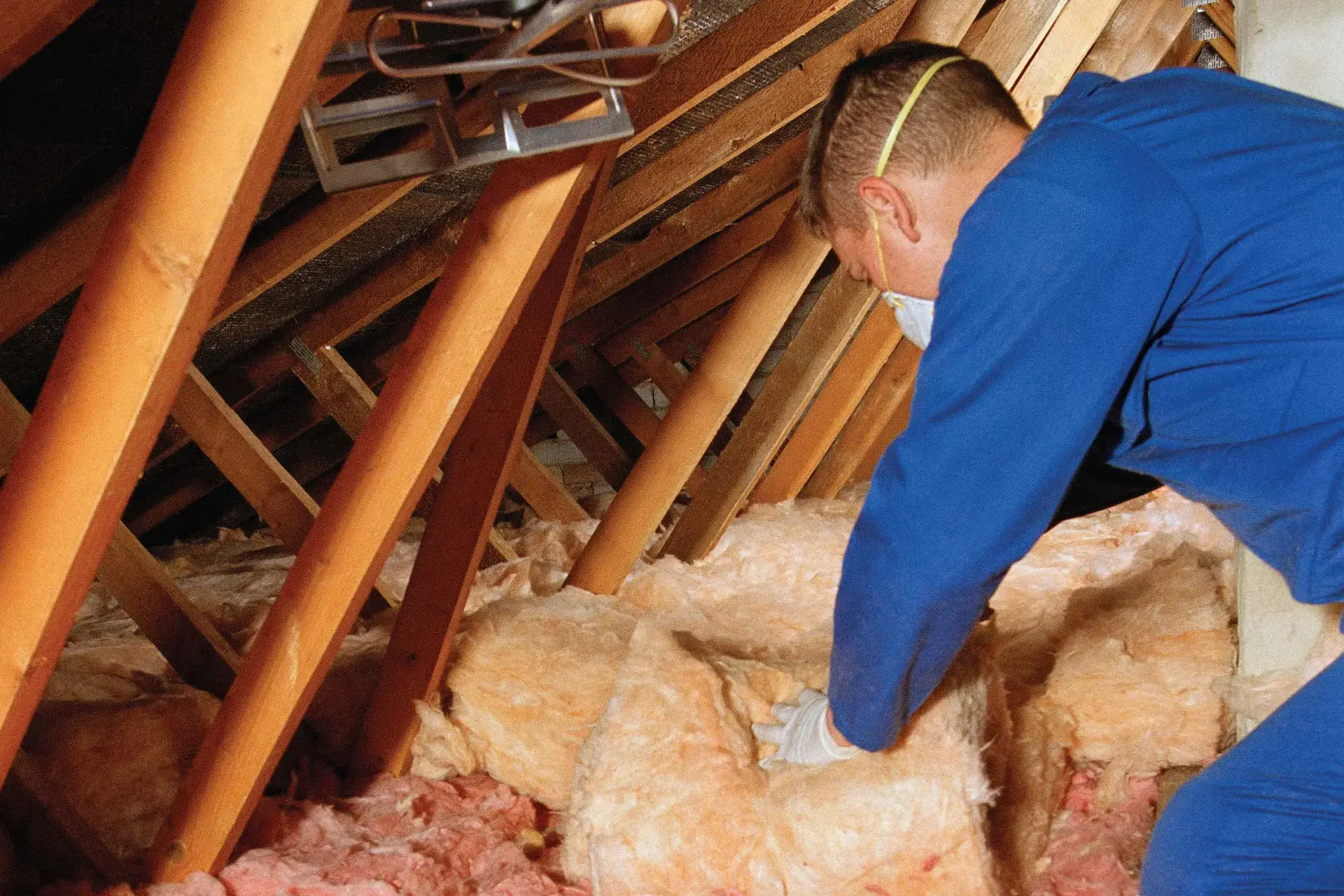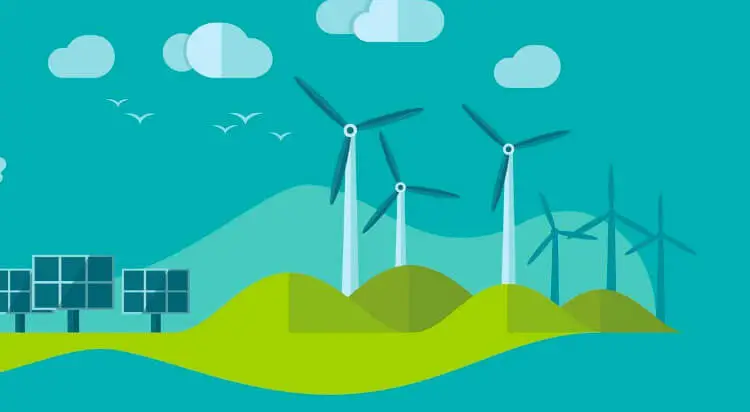Alternating current. This is the form in which electricity is delivered to our homes from the national grid.
A gadget to measure how windy your site is, prior to investing in a wind turbine.
External wall made of two layers with a gap (or cavity) between. Most homes built since the 1920’s have outside cavity walls.
Coefficient of Performance (CoP) is the measure of how many units of heat are generated per unit of electricity used to run the heat pump (see also system efficiency ratio).
A more efficient boiler that uses the waste heat in the flue gases is used to pre-heat cold water entering the boiler. Most new boilers in the UK are condensing. Find out more information about boilers here.
Heating through warming the air. Convective heating is most suited to spaces that are well insulated with little air exchange.
Systems with a hot water cylinder, should have a thermostat on the cylinder to switch off the boiler once the water reaches the required temperature. To maximise efficiency it is recommended that this is set at 60 degrees. It should not be lower than this to prevent the risk of legionnaires disease. Find out more about heat controls here.
The type of electricity produced by batteries, solar panels and wind turbines.
Uncontrolled ventilation, and also a cause of considerable heat loss. Find out more about draughts here.
A Government energy efficiency scheme in Great Britain to help reduce carbon emissions and tackle fuel poverty.
EPCs rate your house (or business premises) for energy efficiency on a scale of A to G. It also provides information on how to improve the energy efficiency, and what level you would attain if you put the measures in place. All homes bought, sold or rented require an EPC.
Attached to a boiler in order to use heat recovered from the flue exhaust gases to pre-heat mains water before entering the boiler, which increases efficiency. Most new boilers are condensing, which means they have flue gas heat recovery built in.
In a home without a boiler, water can be heated using one or more immersion heaters which heat water in the cylinder, usually one in the top and one in the bottom. Immersion heaters are commonly used in night-storage heaters, and also can be used to heat water from solar PV. Find out more about immersion heaters here.
Used to convert direct current (DC) electricity to alternating current (AC), so that it can power domestic appliances or be exported to the grid
Kilowatt hour is a unit used to measure energy. Electricity bills are charged in kilowatt hours, and it is the unit used to measure the energy generated by wind turbines or photovoltaic solar panels
Kilowatt hour per year. This can be used in terms of heat output, or the amount of energy needed to heat a house. For example, my solar thermal system is predicted to generate 2,517kWh of heat per year. The Department of Energy and Climate Change (DECC) calculates that the average household requires 3,742 kWh/year of energy to heat its hot water.
Kilowatt peak is the measure of how much power a photovoltaic system produces from the sun under test conditions. It measures the power produced under 1kW per m2 of light. The more efficient the system, the smaller the area of panels needed.
This term refers to technologies which minimise the amount of carbon (or greenhouse gas) emitted into the atmosphere. At a domestic level it includes air and ground source heat pumps and combined heat and power. In national terms it includes nuclear power or the yet to be developed concept of carbon capture and storage – both of which continue to be controversial.
Central heating systems that work with a lower flow temperature (typically 35-45 degrees C compared to 60-80 degrees C in a traditional radiator system). There are low-temperature radiator systems, and underfloor heating is a common form of low-temperature heating. Heat pumps are best for delivering low temperature heating, and it’s most effective in a well insulated building.
A series of ducts that draw air from warm rooms (kitchen, bathrooms) and inject it to cooler rooms (lounge, bedrooms). Your building must be very air tight in order for MVHR to be effective. There is also mechanical ventilation without heat recovery.
Is the generation of heat or power by renewable or low carbon means, by individuals, businesses or communities for their own use.
Also known as elephant grass, miscanthus is one of the front runners in the search for a commercially viable biomass crop in the UK and Europe. It is originally from China, but has a high yield when grown in the UK.
Design that works to most effectively use the sun’s energy for heating. In passive solar heated buildings, the suns energy is brought into the building during the day (for example through South facing windows) and is stored by building fabric and released back into the building in the evening.
A rigorous standard for energy efficiency in building design which creates minimal energy use for heating and cooling.
This is where you can set the on/off times for your heating and hot water. It’s worth making sure that you can control the heating and hot water separately if you are thinking of installing solar water heating
Radiant heat contrasts convection heat in that it heats objects directly rather than heating through the air. Radiant heaters include infrared panel and patio heaters, underfloor heaters, and portable halogen heaters.
The reduced data SAP was introduced to assess the energy and environmental performance of existing dwellings cost effectively. It was developed in 2005 for the introduction of Energy Performance Certificates.
Energy generated from sustainable natural resources, such as sun, wind, water and geothermal heat. This includes biogas and biomass, hydroelectricity, solar heat and electricity, geothermal energy, wind, wave and tidal power. Find out more about renewable energy.
Government scheme to encourage the take up of renewable sources of heat generation. The domestic scheme opened on 9 April 2014 with everyone who has had an eligible system installed since July 2009 eligible to apply. Payments will be made to eligible households quarterly for seven years.
This is the government’s main system of supporting renewable electricity generation. It requires electricity suppliers to source percentage of their sales from renewables (this percentage increases each year). For each megawatt hour of renewable energy they generate, they receive a tradable certificate called a Renewables Obligation Certificate (ROC). Small scale generation is rewarded by the Feed-in Tariff (see above).
Are designed to incentivise the large energy companies to invest in renewable energy. They are also paid to microgenerators who receive two for each megawatt hour of electricity generated.
Refers to products that are installed to an existing house, rather than as part of a new build. It tends to be more expensive to retro-fit, as systems such as plumbing might have to be changed.
The government’s financial incentive to encourage the microgeneration of heat through a one-off payment to help with installation costs. Available from July 2011, the scheme closed on 31 March 2014.
Turns the boiler (and thus the heating) on when the temperature falls below the required temperature and off when it rises above it. It should be placed in the most used room. Digital thermostats are much more accurate than the older dial type.
The Standard Assessment Procedure is the Government’s principal methodology for assessing the energy and environmental performance and the compliance of new and existing dwellings.
Records consumption of electricity (or can be for gas or water) at short intervals and allows two way communication about that information between the user and the utility supplier. They allow for real-time awareness of electricity usage and cost, as well as remote control of electricity use. Find out more about smart meters here.
Unlike cavity walls, which are composed to two layers of wall with a gap between, solid walls have no gap. Homes built pre-1920’s will probably have solid outside walls. Solid walls let more heat out, so although they tend to cost more to insulate, solid wall insulation will save a lot of energy from heating.
This is where all the electricity generated by the installation is fed directly into the grid without providing for onsite use. The definition of ‘stand-alone’ is an installation that is not wired toprovide electricity to a building (applicable from 1 December 2012). Find out more about solar PV here.
A heater that is designed to take advantage of cheaper night-time electricity tariffs and release heat later into the home. These generally need to be topped up during the day, and are not a very efficient way form of heating.
This is where floorboards are laid on joists. A good way to tell whether you have got these is by looking to see if you have airbricks outside. Find out more about suspended floors here.
The system efficiency measures the amount of heat the pump produces for each unit of electricity needed to run the entire heating system (including hot water and supplementary heating such as an immersion). This is different from the COP (coefficient of performance) which just measures the amount of heat produced per unit of electricity used to run the heat pump.
Similar in appearance to hot-water cylinders, but differ in how they operate. The water in the store is not for drinking. If the thermal store feeds domestic hot water, this is done via a heat exchanger where cold water from a header tank is heated through a coil it passes through, absorbing heat from the tank. Thermal stores are commonly installed with renewable technologies as a way of storing renewable heat until it is needed or buffering against high peaks and troughs from input systems. Find out more about thermal stores here.
These are the most basic form of zone control. Fitted to individual radiators, they allowing you to control the heat in each room. The radiator in the room with the room thermostat should not have a TRV as well. To be effective they need a free flow of air to sense the temperature in the room, so shouldn’t be obstructed by furniture or curtains.
A commonly used measure for thermal resistance in carpets and other textiles such as duvets. A higher tog value means warmth is better retained. If you are installing carpet with underfloor heating, you’ll want a lower tog value so that the heat is allowed to transfer upwards into the room.
A form of solar heating that takes air from outside a building and heats it using sunlight, then moves the warm air through the building using pressure differences.
Very small opening, usually in a window, that allows a small amount of ventilation when doors and windows are closed. Find out more about ventilation here.
A heating system using either warm water piped under the floor or electric coils under the floor. This warmth is radiated up into the room, and replaces radiators. Find out more about underfloor heating here.
Indicates how well a part of the building (ie roof, window, door, wall) keeps the heat inside the building. It measures the heat flow through those components. The higher the figure, the higher the heat loss. It is measured in terms of how many watts (W) of thermal energy is transported through a component of 1 square meter (m2) at a temperature difference of 1 degree centigrade, ie W/m2.
The controlled entry of fresh air into a building. Find out more about ventilation here.
(Also known as Drain Water Heat Recovery Systems and Grey Water Heat Recovery Systems) take the heat from shower drain water and through an exchanger pre-heat water that feeds a boiler, cylinder, mixer, or thermal store.
Store and monitor heat loss data so they can predict how hot the system needs to be to provide adequate room heating. Because they remember the times and temperatures that caused a boiler to come on and off, they can make your heating system more accurate than using thermostats.

